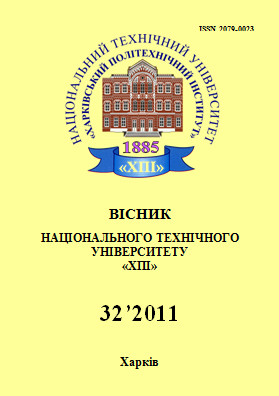Метод виділення рухомих об’єктів на нестабілізованому відеозображенні
DOI:
https://doi.org/10.20998/%25xAbstract
Запропоновано метод виділення об'єктів, що рухаються, у нестабілізованому відеозображенні, заснований на використанні вирахування послідовних кадрів. Метод передбачає виконання стабілізації зображення, виділення областей руху й власне об’єктів, що рухаються. За рахунок використання однієї й тієї ж матриці міжкадрової різниці при стабілізації та виділенні об’єктів, що рухаються, зменшено час обробки даних.
References
Wang L. Recent developments in human motion analysis / L. Wang, W. Hu, T. Tan // Pattern Recognition. – 2003. – Vol. 36, № 3. – P. 585–601.
Haritaoglu I. W4: A Real-Time System for Detecting and Tracking People / I. Haritaoglu, D. Harwood, L.S. Davis // Lecture Notes in Computer Science. Computer Vision and Pattern Recognition. – 1998. – P. 962–967.
Adelson E. H. Pyramid methods in image processing / E. H. Adelson, C. H. Anderson, J. R. Bergen, P. J. Burt, J. M. Ogden // RCA Engineer. – 1984. – № 29-6. – P. 33-41.
Downloads
Published
How to Cite
Issue
Section
License
Copyright (c) 2016 Вісник Національного технічного університету «ХПІ». Серія: Системний аналiз, управління та iнформацiйнi технологiїAuthors who publish with this journal agree to the following terms:
- Authors retain copyright and grant the journal right of first publication with the work simultaneously licensed under a Creative Commons Attribution License that allows others to share the work with an acknowledgement of the work's authorship and initial publication in this journal.
- Authors are able to enter into separate, additional contractual arrangements for the non-exclusive distribution of the journal's published version of the work (e.g., post it to an institutional repository or publish it in a book), with an acknowledgement of its initial publication in this journal.
- Authors are permitted and encouraged to post their work online (e.g., in institutional repositories or on their website) prior to and during the submission process, as it can lead to productive exchanges, as well as earlier and greater citation of published work (See The Effect of Open Access).


